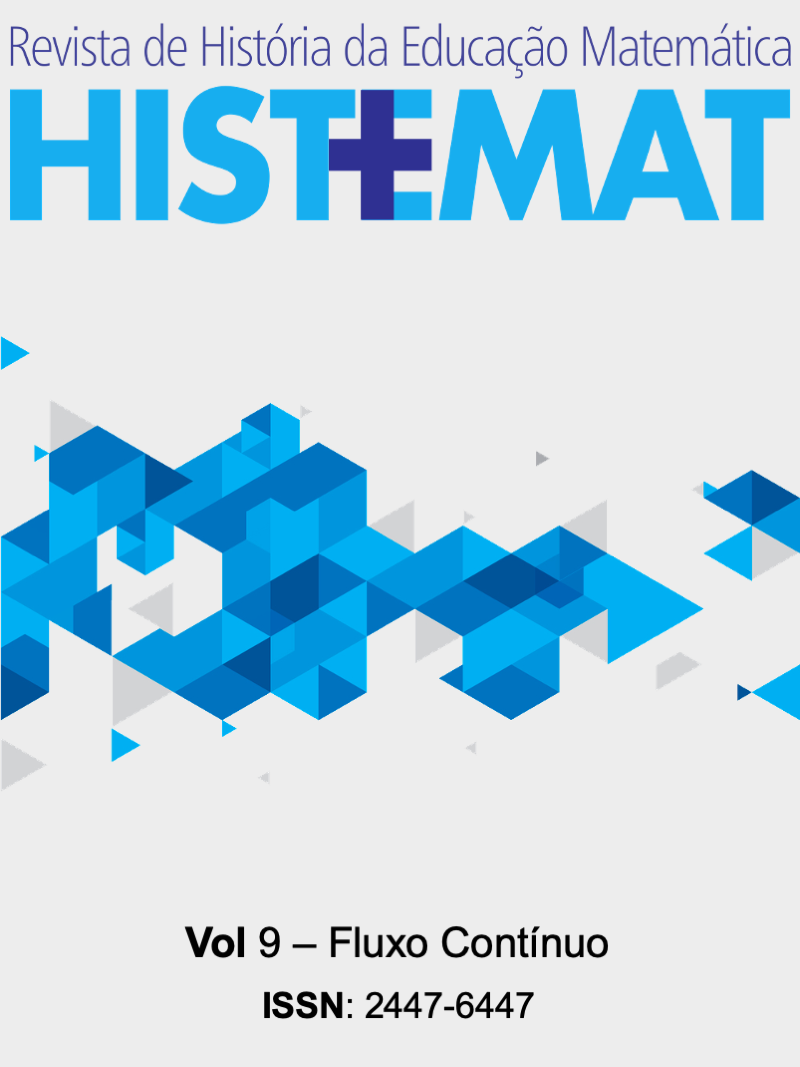SOCIETAL DEMANDS ON THE PROFESSION OF THE MATHEMATICS TEACHER IN ICELAND IN A HISTORICAL CONTEXT
Palavras-chave:
Mathematics teacher education, Teachers’ disciplinary knowledge, New Math, Teachers’ subcultures, PISAResumo
The histories of official teacher education and school legislation in Iceland coincide with the history of ICMI. Iceland, a marginal country in Northern Europe, may be taken as an example when evolution of societal demands on the profession of the mathematics teacher is submitted to analysis and consideration. The following aspects will be considered: (1) Goals of mathematics teaching and the teachers’ role as perceived by them and others; (2) Mathematics education of teachers, teacher subcultures and didactical divide; and (3) The present situation of education of mathematics teachers. The century will be divided into three periods; the early twentieth century, 1946 to the 1970s, and the present time. Iceland is sparsely populated (70,000 in 1900, 300,000 in 2006) and the number of mathematics teachers is low, so the history is traced by historical anecdotes.
Downloads
Referências
Documentary Sources and Interviews
Applications to Iceland University of Education 2005.
Headmasters of lower-secondary schools. Confidential interviews in 2002-2003.
Jónsson, J. H. (2003). Former upper-secondary-school mathematics teacher. Interview on May 25.
Lárusson, H. (2002). Head of department, Ministry of Education. Interview on March 26.
Riesto, E. (2007). Primary-school teacher. Interview on September 22.
Printed Sources
Arnlaugsson, G. (1967). Ný viðhorf í reikningskennslu. Menntamál 40 (1), 40–51.
Bergsten, C. and B. Grevholm (2005). The didactic divide and educational change. Paper proposal for ICME Study 15.
Bjarnadóttir, K. (2006). Mathematical Education in Iceland in Historical Context. Socio-Economic Demands and Influences. Reykjavík: Háskólaútgáfan.
Björnsson, S. (1966). Samanburður á námi í stærðfræði, eðlisfræði og efnafræði í dönskum, norskum og íslenzkum unglinga- og gagnfræðaskólum. Menntamál 39 (2), 100–121.
Cooper, Barry (1985). Renegotiating Secondary School Mathematics. A Study of Curriculum Change and Stability. London: The Falmer Press.
Daníelsson, Ó. (1906). Reikningsbók (Republished to 1956). Reykjavík: Sigurður Kristjánsson.
Daníelsson, Ó. (1920). Um flatarmyndir. Reykjavík: Guðmundur Gamalíelsson.
Daníelsson, Ó. (1927). Kenslubók í algebru (Republished up to 1971). Akureyri: Bókaverslun Þ. M. Jónssonar.
Efnahagsstofnunin (July 1965). A report from the Economics Institution: Several Items from Presentations and Discussions in a Meeting on Educational Planning June 2nd and 3rd 1965. Reykjavík.
Finnbogason, G. (1905). Skýrsla um fræðslu barna og unglinga veturinn 1903–1904. Reykjavík.
Finnbogason, G. (1994/1903). Lýðmenntun. L. Guttormsson (Ed.). Reykjavík: Rannsóknarstofnun KHÍ.
Gíslason, K. (1967). Um málnotkun. In A. Bundgaard. Stærðfræði. Reikningur. Handbók kennara. 1. hefti, p. 7. Reykjavík: Ríkisútgáfa námsbóka.
Gjone, G. (1983). “Moderne matematikk” i skolen. Oslo.
Halldórsson, Á. (2001). Saga barnaskóla í Reykjavík. Reykjavík: Kennaraháskóli Íslands.
Høyrup, J. (1979). Historien om den nye matematik i Danmark – en skitse. In P. Bollerslev (Ed.). Den ny Matematik i Danmark, pp. 49–65. Copenhagen: Gyldendal.
Menntamálaráðuneytið (1999). Aðalnámskrá framhaldsskóla. Stærðfræði. Reykjavík.
Menntamálaráðuneytið (2005). Menntun kennara í stærðfræði- og náttúrufræðigreinum í grunn- og framhaldsskólum 2003–2004. Reykjavík.
Niss, M. (1996). Goals of Mathematics Teaching. In International Handbook of Mathematics Education. Part I, pp. 11–47. Dordrecht / Boston / London: Kluwer Academic Publishers.
Niss, M. and T. Højgård Jensen (Ed.) (2002). Kompetencer og matematiklæring. Uddannelsesstyrelsens temahæfteserie no. 18–2002. Copenhagen: Undervisningsministeriet.
OECD (2004). Learning for Tomorrow’s World. First Results from PISA 2003. Paris.
Þórleifsdóttir, S. (1958). Kennaraskólinn 1909–10. In F. Gunnarsson (Ed.). Kennaraskóli Íslands 1908–1958, pp. 186–190. Reykjavík.
Downloads
Publicado
Métricas
Visualizações do artigo: 73 PDF downloads: 74































